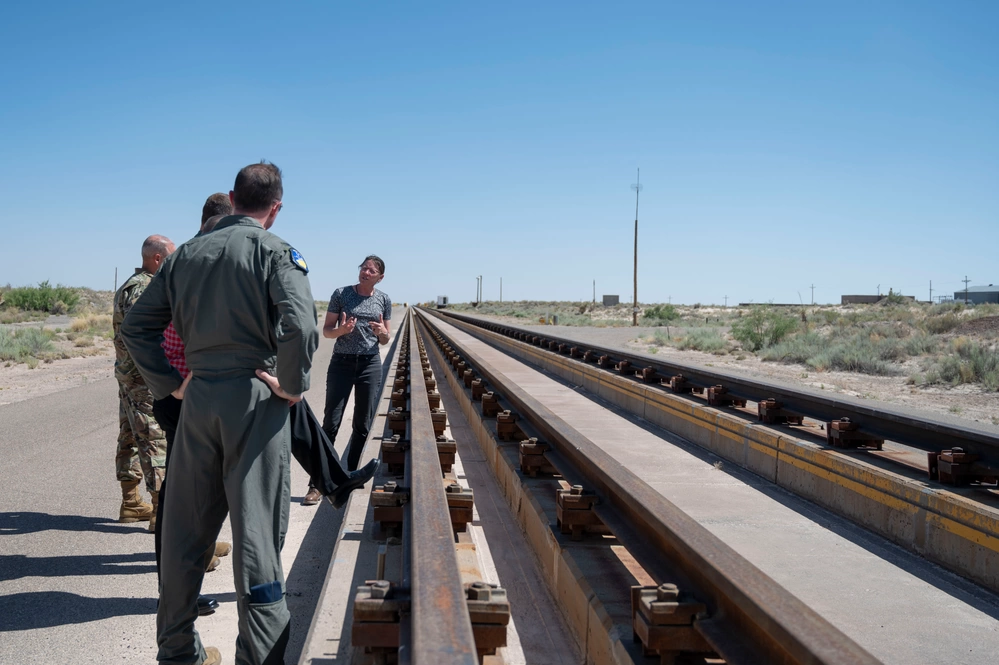
Advancing frontiers of knowledge in science, technology, engineering and mathematics is a goal for many people who work in those fields. For Michelle Zeisset, a good place to achieve those goals is in the southern New Mexico desert.
Zeisset, the 846th Test Squadron technical director at Holloman Air Force Base, is no stranger to New Mexico. She holds two master’s degrees from New Mexico State University and previously worked as a training and weapons systems analyst at White Sands Missile Range.
Looking to further her knowledge of systems engineering and operations research, Zeisset pursued her doctorate in industrial engineering at Florida State University. While there, she had her first Air Force experience working on projects at Eglin Air Force Base. Connections she made there would eventually contact her in 2009 about a job opening at the 704th Test Group. That led to a position in 2014 with the 846th Test Squadron and the Holloman High Speed Test Track.
The HHSTT is famous for holding the world’s land speed record for rocket sleds and it is managed by the Arnold Engineering Development Complex, headquartered at Arnold Air Force Base, Tennessee. Notable work performed there for more than 70 years includes ejection seat tests, high-speed munitions, and artificial rain systems. At more than 10 miles long, it is the longest facility of its kind.
“It is one the coolest facilities in the Department of the Defense,” said Zeisset. “You get to go really fast and blow things up.”
Returning to the warm climate of southern New Mexico was an easy choice for Zeisset, who preferred it to her colder home-state of Nebraska. Her husband, who she met when working at WSMR, was still working in the area while she was out of state.
Throughout her time studying and working in engineering fields, Zeisset observed that women are largely outnumbered by men. In the United States, women account for only 22 percent of engineering bachelor’s degrees. She hopes that number will increase in time.
“All of the people who work here, whatever their gender, are all one team working together to innovate methods to test these systems,” Zeisset said about her colleagues at the 846th Test Squadron. “All of us in this facility know we are doing that and it’s really exciting.”
Practical advances in scientific knowledge have come about from work done at the HHSTT and Zeisset is proud to be part of the lineage of people who came before her. In one area of her work, rain testing of aerospace materials has improved ways of simulating and measuring natural rain on simulated weapons casings and aircraft hulls. Knowledge gained since the early days of testing in the 1960s have trickled down into modern meteorology, improving ways to measure the weather.
“What we do has a direct impact on the future of our nation,” said Zeisset. “We’re pushing the envelope and taking this country forward.”
Zeisset believes the HHSTT also has an important impact that can be felt across the DoD. Whether it is aircrew flight equipment during an ejection sequence, or the weapons systems that better meet the needs of the warfighter in the Great Power Competition with Russia and China, testing performed at Holloman is important for the future of the nation.
